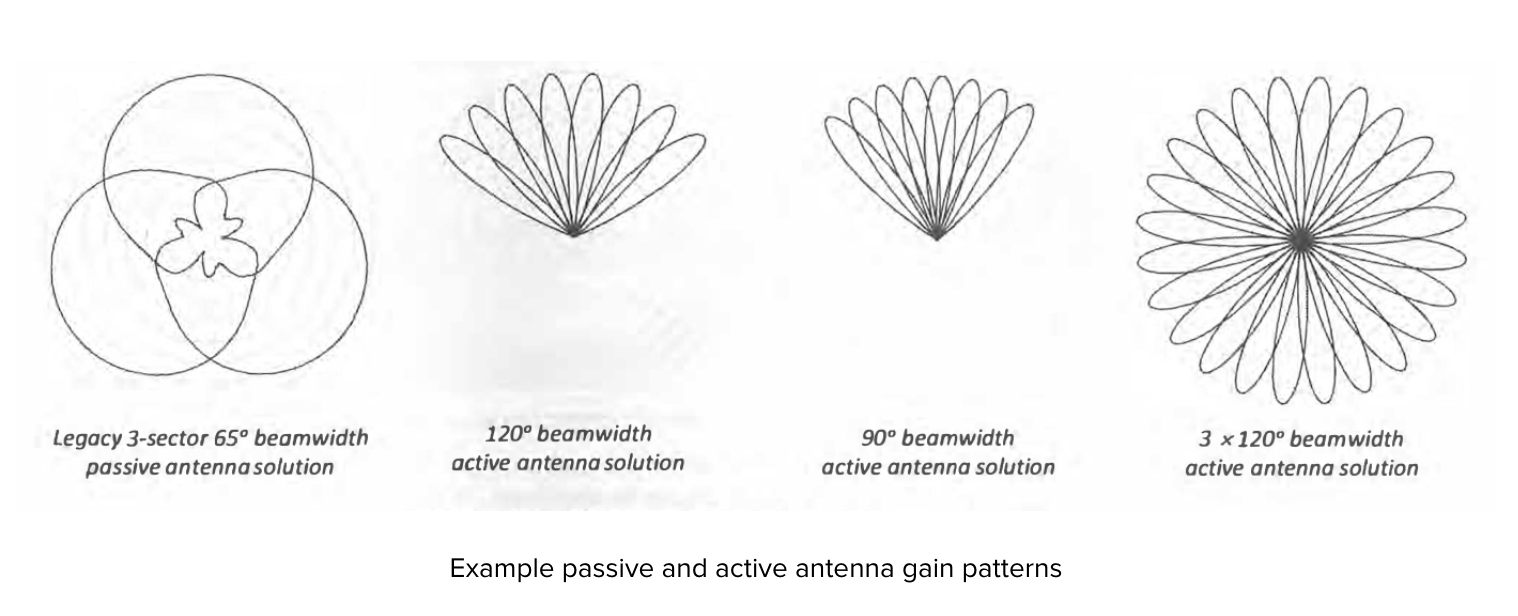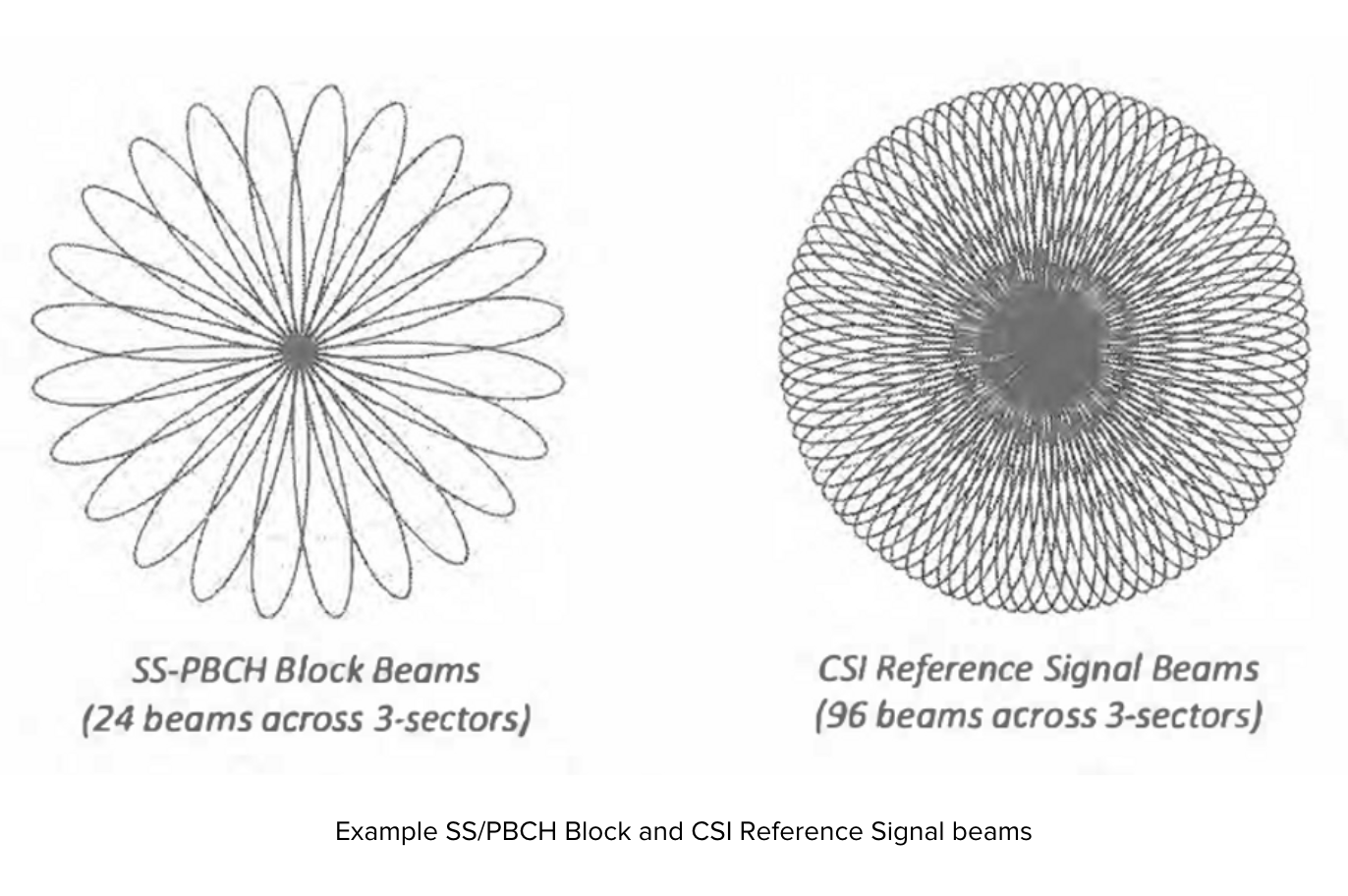5G RADIO NETWORK PLANNING PART-3 UPDATED IN 2024

Introduction To 5G Radio Network Planning
In this third part of our 5G radio network planning series, we delve into the critical aspects of antenna solutions and downlink transmit power considerations. The focus is on the practical and technical challenges involved in selecting appropriate antenna solutions and managing downlink transmit power to meet regulatory requirements.
Antenna Solution
Frequency Range 2
- When using Frequency Range 2, it is likely that an active antenna array is necessary to ensure that link budget requirements are satisfied, i.e. the primary requirement for beam forming is to improve coverage rather than spectral efficiency.
Frequency Range 1
- When using Frequency Range1, there is increased potential for a choice of antenna solutions. Passive antennas can be used in combination with Remote Radio Heads (RRH) or RF Modules. Alternatively, an active antenna can be used with transceivers organized either in a single row to allow beam forming in the azimuth direction, or in multiple rows to allow beam forming in both the azimuth and elevation directions.
Considerations for Antenna Selection
- Selection of an appropriate antenna solution requires consideration of commercial, technical and practical aspects. Passive antennas are likely to be lower cost and may be more practical in terms of size and weight. Passive antennas may be used with or without a beam forming solution. When using beam forming, the beams are likely to be relatively coarse when compared to an active antenna. For example, a passive antenna solution could be based upon an 8Tx8Rx architecture which uses 4 columns of cross-polar antenna elements. A typical minimum active antenna configuration includes 8 columns of cross-polar antenna elements to generate a 16Tx 16Rx architecture. Doubling the number of cross-polar columns allows the beams to be more directional in the horizontal plane beam forming principles are described in Section 1.21) Larger active antenna configurations could be based upon 32Tx32Rx or 64Tx64Rx architectures. The 32Tx32Rx architecture could be based upon 2 rows of 16 transceivers whereas the 64Tx64Rx architecture could be based upon 4 rows of 16 transceivers.
- In all cases, it is necessary to become familiar with the antenna gain pattern offered by a specific solution. Figure below compares a typical 3-sector 65° beam width passive antenna solution with an active antenna solution. In the case of the active antenna solution, the beams are intended to represent SS/PBCH Block beams. The addition of refined CSI Reference Signal beams is illustrated later in this section.
Beam forming with Active Antennas
- In the case of the active antenna, the beam width of the envelope of beams can be controlled by selecting a specific set of beam forming coefficients. Figure below illustrates a first example where the beam width of the envelope has been set to 120° for a 3-sector Base Station configuration, and a second example where the beam width of the envelope has been set to 90° for a 4-sector Base Station configuration. Both examples assume the use of 8 SS/PBCH Block beams within a cell. This means that the beams arc more closely packed when distributing the beams across 90° rather than 120°. Alternatively, a reduced number of beams could be configured as the beam width of the envelope is reduced, e.g. in the case of a 6-sector configuration using a 60° envelope beam width.

CSI Reference Signal Beams
- Figure below compares a set of SS/PBCH Block beams with a set of CS! Reference Signal beams. Within this context, the CSI Reference Signal is used for beam refinement. It is assumed that there are 4 CSI Reference Signal beams for each SS/PBCH Block beam. It is also assumed that all transceivers belonging to the active antenna are organized in a single row. This means that the 4 CSI Reference Signal beams associated with each SS/PBCH Block beam are distributed in a horizontal row (rather than a 2x2 grid or a vertical column). Figure below illustrates that the CSI Reference Signal beams offer a high resolution for beam selection and help to avoid any nulls between beams.

Downtilt Considerations
- In addition to studying the antenna gain patterns in the horizontal plane, it is important to also consider the vertical plane and the requirement for downtilt. Legacy passive antennas use a combination of mechanical and electrical downtilts. These downtilts help to ensure that RF transmissions do not overshoot into neighboring cell coverage areas. Capacity limited regions with high site densities are likely to require increased downtilt relative to low traffic regions with lower site densities. Active antennas can use a combination of mechanical and electrical/beam forming downtilts. If the active antenna has multiple rows of transceivers, the beam forming downtilt is controllable and the active antenna can generate multiple rows of beams with a range of downtilts. Figure below illustrates two example beam patterns. The 8x1 beam pattern could be generated by a 16Tx16Rx active antenna with a single row of transceivers, whereas the 4x2 beam pattern could be generated by a 64Tx64Rx active antenna with multiple rows of transceivers.

- Figure below illustrates the downtilts belonging to single row and double row beam patterns. The vertical profile of the single row beam pattern is similar to a legacy passive cross polar panel antenna. The cell edge is defined by the angle of the upper 3 dB beam width. The vertical profile of the double row beam pattern illustrates the different beam forming downtilts provided by each row of beams. In this case, the cell edge is defined by the angle of the 3 dB beam width belonging to the upper row of beams. The lower row of beams provides coverage towards the base of the antenna. Once the beam pattern has been selected and the beam forming downtilts identified, the mechanical downtilt can be determined.

- If the active antenna is being added to an existing Base Station site then the cell edge provided by the active antenna can be aligned with the cell edge provided by the existing legacy antenna. However, it may be appropriate to adjust the downtilt to account for differences in the operating bands, e.g. if a higher operating band is used with higher air-interface attenuation then there may be scope to reduce the downtilt to improve coverage.
Downlink Transmit Power
- National regulators may specify a maximum permitted total EIRP per MHz. Operators are then responsible for ensuring that the limit is not exceeded.
Passive Antenna Deployments
- In the case of passive antenna deployments without beam forming, the ETRP per transmit path can be calculated by adding the antenna gain to the maximum commissioned transmit power and subtracting any cable/connector losses. The result must then be increased by the number of transmit paths, e.g. a 3 dB increase for 2x2 MIMO and a 6 dB increase for 4x4 MIMO. In this case, the antenna gain is fixed and is dependent upon the antenna model (in general, dependent upon the horizontal and vertical half power beamwidths). A typical antenna with 65' horizontal beam width could have a gain of 18 dBi. If each transmit path is commissioned to operate with a maximum of 46 dBm and the cable/connector losses sum to 1 dB, then the maximum EIRP would be 63 dBm. If the Base Station is configured with 4 transmit paths to support 4x4 MIMO then this power would be increased to 69 dBm. This transmit power could be distributed across a 40 MHz channel bandwidth. A national regulator may specify an upper limit of65 dBm per 5 MHz which corresponds to 74 dBm per 40 MHz.
Active Antenna Deployments
- In the case of active antenna deployments with beam forming, the general principles of the calculation are the same but the antenna gain depends upon the beam forming weights applied to the transmitted signal, i.e. the antenna gain becomes a function of both the software and hardware. An active antenna using digital beam forming in Frequency Range 1 may be equipped with 64 transmit paths, and each transmit path could be commissioned to operate with a maximum of 26 dBm. In this case, the maximum total transmit power would be 26 + 10xLOG(64) = 44 dBm. The antenna gain generated by the active antenna could be 25 dBi for a directional beam, leading to an EIRP of 69 dBm.
- These examples serve to illustrate that a passive antenna solution with a high transmit power capability and moderate antenna gain can generate the same EIRP as an active antenna with a moderate transmit power capability and high antenna gain. It is possible that the transmit power of the active antenna could be increased but it may be restricted by the maximum EIRP regulatory requirements. The active antenna solution benefits the system by radiating the power across a narrower beam width and thus helps to reduce intercell interference which can have a significant impact upon system performance.
- It should be noted that the example above assumes that all of the downlink power is radiated using a single beam. In the case of digital beam forming, the Base Station could transmit from all beams simultaneously and then the downlink power is shared across the beams (the potential to allocate all of the downlink power to a single beam will depend upon the implementation of dynamic power sharing across beams). If the active antenna is configured with 8 beams and all beams are simultaneously active, then the transmit power per beam would be reduced by 10xLOG(8) = 9 dB.
- It may be permitted to include TDD duty cycles when calculating the maximum EIRP. For example, if 60% of slots are downlink then the average EIRP is 10xLOG( 1/0.6) = 2.2 dB lower than the instantaneous EIRP.
Conclusion
In conclusion, selecting the appropriate antenna solution and understanding downlink transmit power are crucial for effective 5G radio network planning. Both passive and active antenna solutions offer unique advantages, and the choice depends on a balance of commercial, technical, and practical considerations.
References
- 4G 5G Testing and protocol analysis
- Syllabus for 4G 5G Protocol Testing Training
- Contact Us for training
- Qualcomm Academy Videos
- 3GPP Website
- ShareTechNotes



Comments
Post a Comment